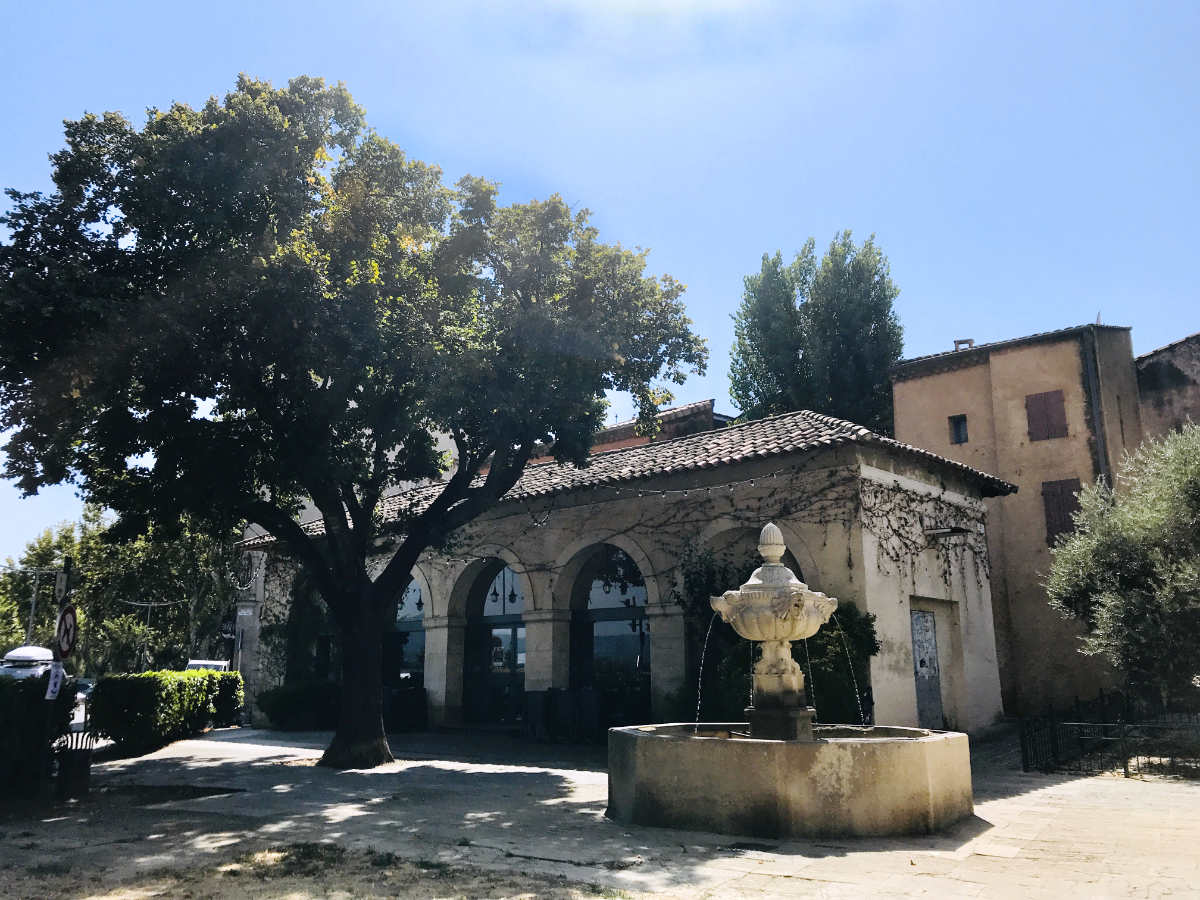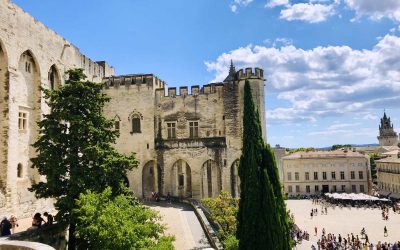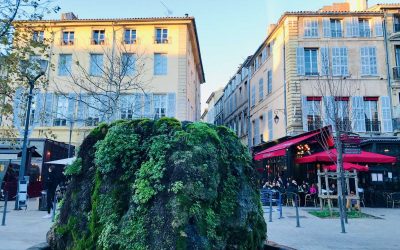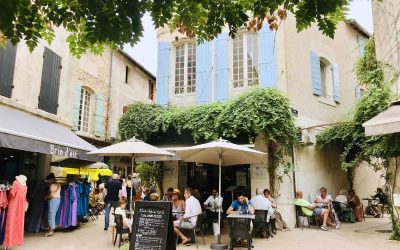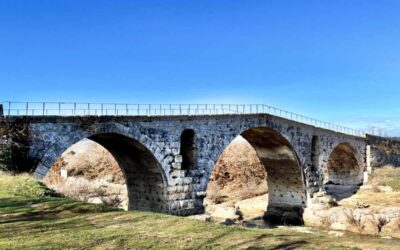Located in the south of France, the sleepy town of Carpentras has seen a lot of history. With a unique blend of old architecture and new art, this small town in Provence is a great place to visit.
But I will be the first to admit, that Carpentras is not one that attracts as many tourists as its neighbours. Surrounded by cute villages that are much more tourist-friendly, Carpentras is more of a busy economic center.
However, with the town center surrounded by fortified walls dating back to the Middle ages, its narrow streets that open up into large squares certainly have plenty to look at and admire. It is also the location of the oldest synagogue in France, as well a relic from the time of Jesus Christ, showing the historical importance of this city.
Dating back to antiquity, the settlement became a fortified town during the Middle ages. It was part of the Comtat Venaissin or the Comtat as it is sometimes called, which was part of the Papal States that were not a part of France.

In this period, the Catholic Popes were not based in Rome, but in nearby Avignon, in what was called the Avignon Papacy. The Comtat was founded in the Middle Ages in 1274 and dissolved only in 1791, a couple of years after the French Revolution.
It included the towns of Carpentras, Vaison-la-Romaine, Isle-sur-la-Sorgue, and Cavaillon. When you visit around town, you will notice a lot of artwork and antiques referred to as from the Comtat Venaissin, and the people from that era referred to as Comtadins.
These days, as part of the Vaucluse department in the Provence-Alpes-Côte d’Azur region (PACA) of southeastern France, Carpentras has a population of around 30,000 full time residents, with the surrounding area growing significantly during the summer months.
With a couple of small museums, shopping streets and plenty of restaurants and wine, let’s look at the top things to do in Carpentras, shall we? Allons-y!
Things to do in Carpentras
1. Cathedrale Saint-Siffrein and the Relic of Saint Mors
Right in the heart of the fortified city walls of Carpentras, is its impressive cathedral, with its coat of arms. The symbol on the coat of arms of Carpentras is a relic believed to the nails from the cruxifixion of Christ.
Called the Saint Mors, tradition says that Empress Helena, the mother of Constatine, found the nails during an excavation and fashioned them into a relic in the 4th century.
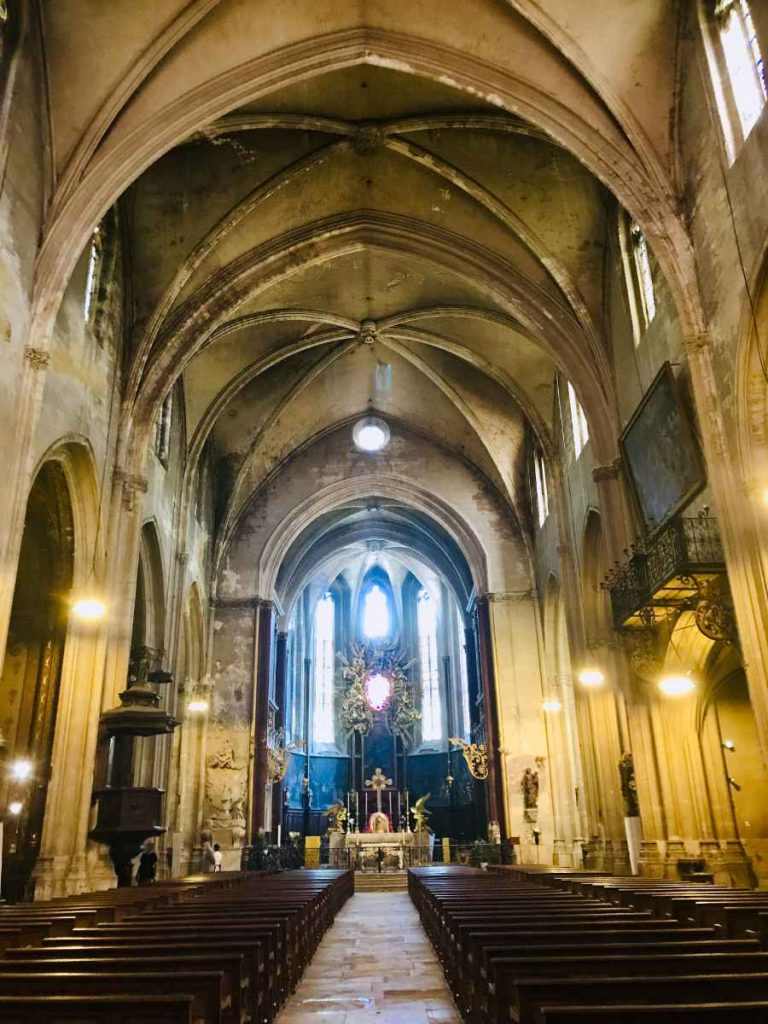
Records show that this relic was kept in the treasury of the church of St. Sophia in Constantinople until the looting of the city during the 4th Crusade (1202-1204) by French and other European knights.
The relic disappears for a period of time, and then reappears in 1226 century on the seal of the Bishop of Carpentras. But it is not just as a painting on a seal, there is an actual relic that is still held in the Cathedral of Carpentras.
The Cathédrale Saint-Siffrein de Carpentras dates back to the 12th century, although it was substantially renovated several times during the Middle ages.
The Relic is kept in a protected oratory in the Cathedral, and can be a little difficult to find, because you have to look for the switch to turn on the lights.
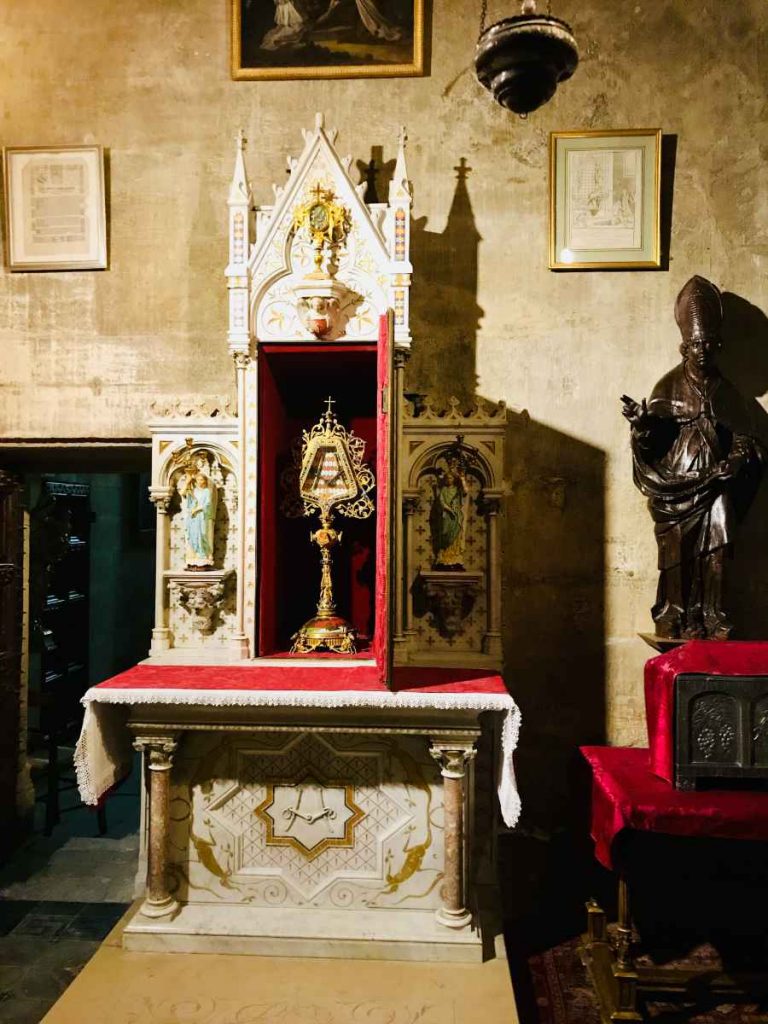
It is not the original reliquary which was made from vermeil, as it was destroyed during the French Revolution. This new reliquary was made in 1872 by Armand-Calliat , a craftsman from Lyon.
If you are interested in seeing more history from the time of Jesus, drive over to Saint-Maximin-la-Sainte-Baume where Mary Magdalene is buried, according to that town’s tradition. It is about 1h30 from Carpentras. You can visit the church where her grave is, as well as the grotto where she perhaps spent the last few years of her life.
2. Synagogue
Carpentras also has the honor of being the site of the oldest synagogue in France. Built in the 14th century, it is a discreet building tucked into a corner of Place Maurice Charretier, a large square in the center of town.
Jewish communities have lived in France as far back as the 1st century, but have been persecuted over the centuries, just as in most of Europe.
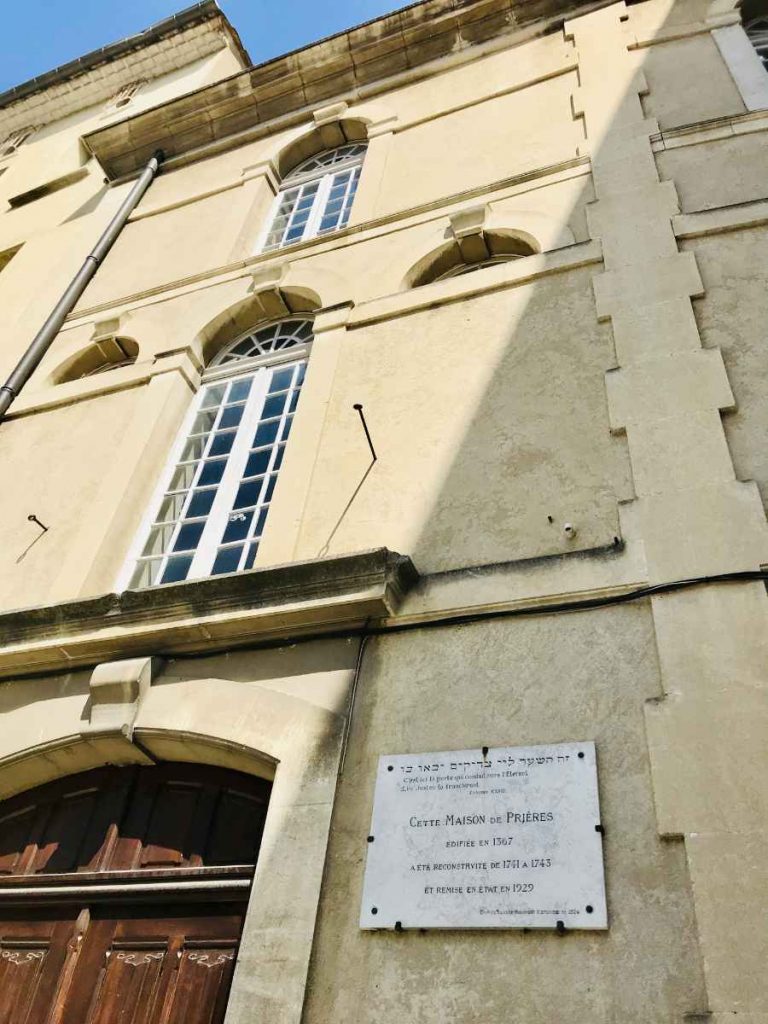
There was likely an earlier synagogue in Carpentras on Rue de la Vieille-Juiverie (which translates as “Road of the old Jewish community”). However, that was turned into a chapel in the 14th century by Catholic Pope Jacques XXII, who was at the time residing in nearby Avignon.
After that event, the community built this “new” synagogue. With high ceilings, ornate golden chandeliers and tall pillars, the main hall of worship is a sight to behold. Classified as a historic monument, entrance is only by reservation and costs around €7.
3. Museums
Musée Sobirats is a art décoratif museum, housed in an 18th century mansion, the Hôtel Armand de Chateauvieux. If you want to see how the rich bourgeois used to live in the 18th century, the museum’s collection will be worth your while.
From boudoirs to lounges, visitors can discover a collection of regional furniture, tapestries, and more, from nearby Marseille and Moustiers-Sainte-Marie, along with several landscape paintings and aristocratic portraits. The museum is by reservation only.
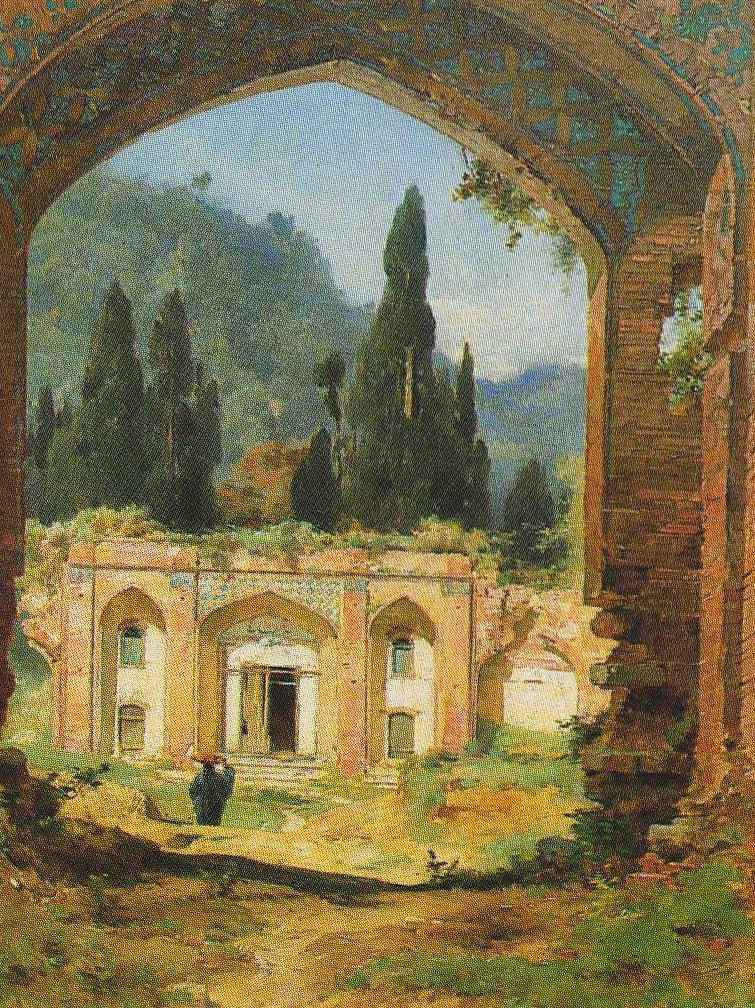
Another lovely museum is the L’Inguimbertine Bibliothèque-Musée à Carpentras (Hôtel-Dieu). The Inguimbertine library was initially at the Comtadin-Duplessis Museum, before being transferred here in 2021.
It is a large collection of archaeological, pictorial, graphic and scientific book collections. It was assembled by a former Bishop of Carpentras, Joseph-Dominique d’Inguimbert in the 17th century.
Added to it was a fine arts collection with several paintings from the Renaissance and Middle ages periods by Provençale, French and Italian painters. One of its most famous paintings is the masterpiece Gamines by the impressionist painter Louise Catherine Breslau in 1890.
4. Passage Boyer
The Passage Boyer is sometimes called the rue vitrée (meaning “glass street”), and is typical of the covered shopping galleries of the mid-19th century. It is similar to the covered passages that are quite common in Paris, mostly on the Right Bank.
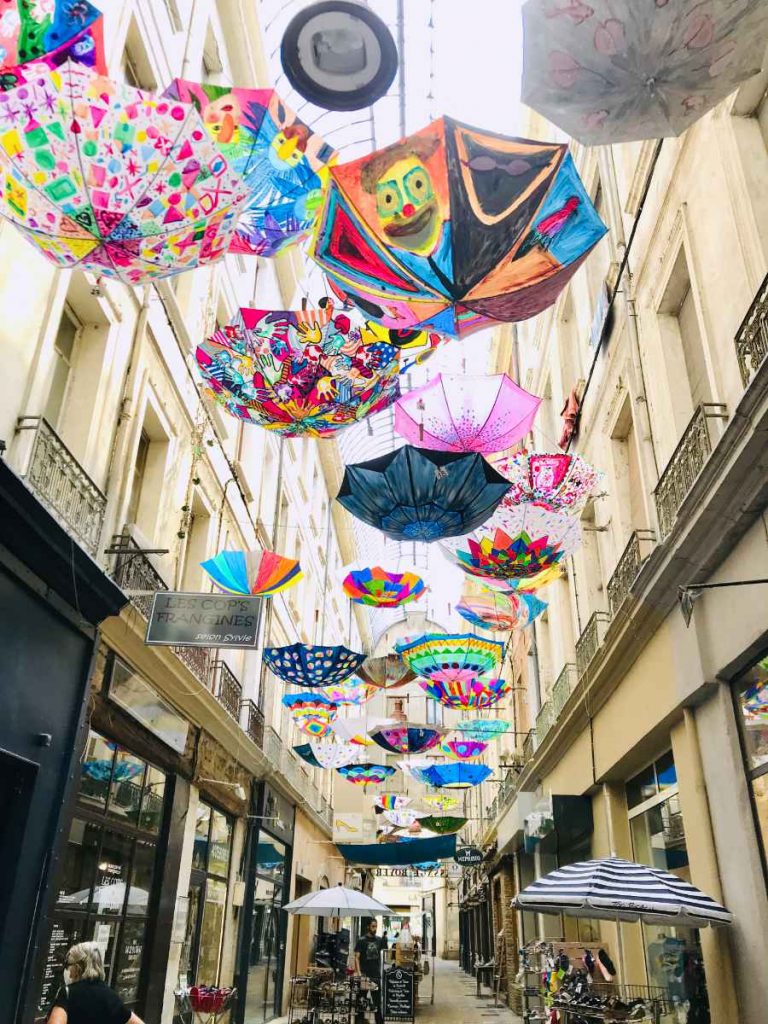
It was named Jean Boyer who came up with the idea in Carpentras, and converted the alley in 1848 into a walkway with iron casings and glass.
A few steps away from the Cathedral, it has a large array of cute cafés and plenty of little shops to browse through and enjoy. You can read more about local food and drinks to try in Provence here.
5. Côte du Rhône Wines
You can’t go all the way to Carpentras and miss out on the wine. The city is surrounded by vineyards carrying the Côtes du Rhône appellation, with labels from Luberon, Uzès, Ventoux, and more.
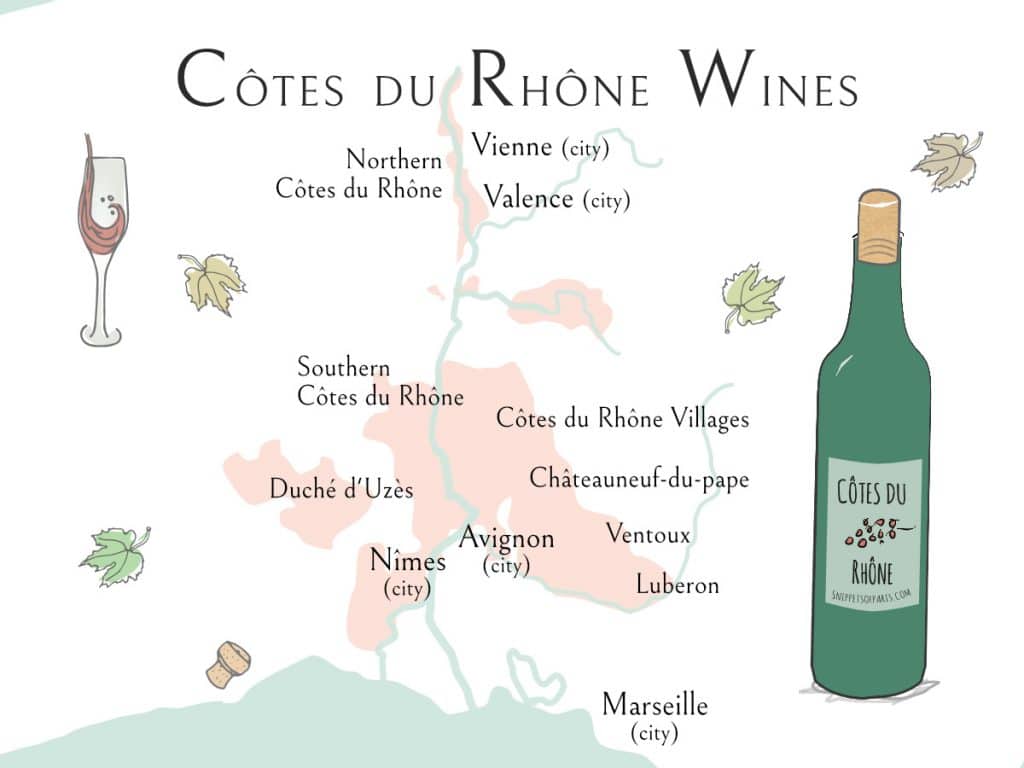
About 15 miles (25km) away from Carpentras are the vineyards of Châteauneuf du Pape. The name translates to “Pope’s new castle”, and it is named for the castle that was built in the area by the Avignon Popes as their summer residence.
There are several tours (with wine tastings) leaving from nearby Avignon, which I highly recommend, especially to avoid drinking and driving.
6. Nearby towns
You can also use Carpentras as a base to visit nearby lavender fields, and the hugely popular Gorges du Verdon which is around 3 hours away, and can be visited as a day trip. One of the most beautiful villages in France, Moustiers-Sainte-Marie, is near the Gorges and you should definitely put it on your list if you are heading in that direction.
Closer to Carpentras, there are other several small villages in the area that are worth visiting such as Roussillon, St. Remy de Provence, Isle-sur-la-Sorgue, Fontaine de Vaucluse, Baux de Provence, and more. You can read more about each town by clicking on the link. (In case you are wondering, I have family in the area and have been to and can recommend them all!)
Market days
Carpentras holds a marché once a week with farmers and local producers, which tends to be quite popular. Market days are every Friday from 8:00am to 12:30pm in Place du Centreville.
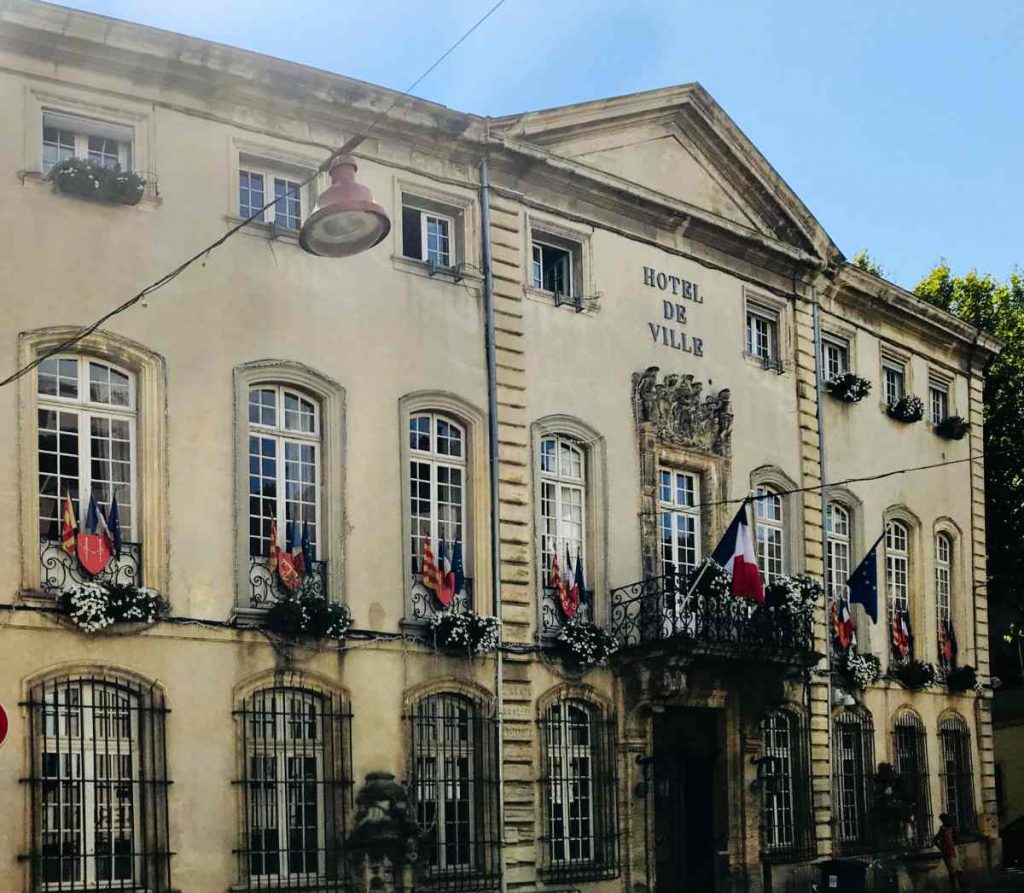
How to get to Carpentras?
If you are coming from Paris, it takes around 7 hours by car to get to Carpentras. However, there is a high-speed TGV train which can bring you from Paris to Avignon in 3h30 from where you can take a local train or bus to Isle-sur-la-Sorgue.
The largest international airport is in Marseille, which is about 70 miles (115km) away. Avignon airport is 15 miles (25km) away, but does not have as many international connections.
How many days should you spend?
I would recommend visiting Carpentras as a day trip to visit all the historic sites. However, you can decide to use Carpentras as a base to travel around this part of Provence, as hotel prices are cheaper compared to other towns that attract the crowds.
Where should you stay?
I would suggest staying in the following hotels which are near all the main attractions:
- €€€ – Best Western Le Comtadin – in the heart of Carpentras
- €€€ – Le Safari Hotel Restaurant – further away, but with a pool

If you enjoyed that post, you may want to read more about traveling around Provence and the French Riviera. A bientôt!
